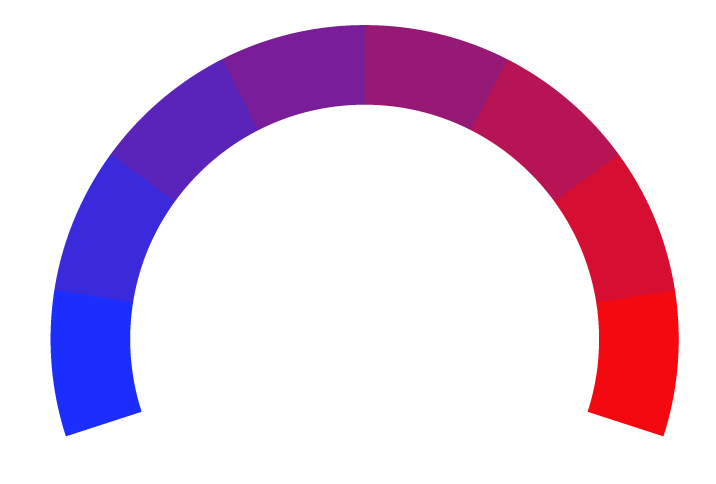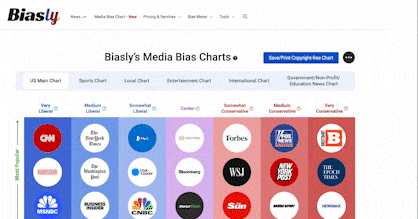Andrew Cuomo's stance on criminal justice generally leans liberal, but with some moderate elements. He has supported progressive reforms like eliminating cash bail for misdemeanors and non-violent felonies, expanding discovery laws to provide defendants with more information before trial, and investing in alternatives to incarceration. However, he has also faced criticism from progressives for not going far enough in some areas, such as clemency grants. Cuomo has emphasized both public safety and fairness in the justice system, supporting measures like body cameras for police while also advocating for tougher penalties on certain crimes. His approach aims to balance reform with maintaining order, reflecting a mix of liberal and moderate positions on criminal justice issues.
Source: NYS Focus Andrew Cuomo's stance on the economy generally leans liberal, with a focus on strengthening the middle class and combating income inequality. He has supported progressive policies such as raising the minimum wage to $15 per hour, expanding affordable housing programs, and increasing child care tax credits for working families. Cuomo has also prioritized large-scale infrastructure investments to boost economic competitiveness and create jobs. However, he has taken some more moderate approaches as well, such as implementing a property tax cap and lowering taxes for those making under $1 million per year, indicating a balanced approach to economic policy that aims to support both workers and businesses.
Source: Wikipedia Andrew Cuomo's stance on education generally leans liberal, but with some moderate elements. He has supported progressive initiatives like expanding access to higher education through the Excelsior Scholarship program, which offers free tuition at public colleges for eligible students. Cuomo has also advocated for increased funding for pre-K programs and community schools. However, his approach to K-12 education has been more mixed, with support for charter schools and teacher evaluations tied to student test scores drawing criticism from some education advocates. Cuomo has also faced challenges in fully funding the state's Foundation Aid formula for public schools, though he eventually agreed to phase it in by 2023 under political pressure.
Source: Slate Andrew Cuomo's stance on energy policy generally leans liberal, with a focus on renewable energy and climate action. As governor, he signed a law committing New York to net-zero greenhouse gas emissions by 2050 and 70% renewable power by 2030. Cuomo supported expanding clean energy industries, streamlined permitting for renewable projects, and blocked a proposed gas pipeline. He also backed the shutdown of the Indian Point nuclear plant due to safety concerns. However, his approach wasn't without controversy, as some rural conservatives opposed his renewable siting law. Cuomo's energy policies aimed to position New York as a leader in progressive climate action while also promoting economic development in clean energy sectors.
Source: Wikipedia Andrew Cuomo's stance on government dependency leans Somewhat Left. While he has sought to rein in state spending and reduce the budget deficit, he has also advocated for increased government assistance and social programs, particularly during the COVID-19 pandemic. Cuomo pushed for federal aid to address budget shortfalls and support struggling New Yorkers, and he expanded access to Medicaid and other social services. However, he has also taken some more moderate positions, such as resisting tax increases on the wealthy. Overall, Cuomo's approach aims to balance fiscal responsibility with a social safety net.
Source: Wikipedia Andrew Cuomo's stance on healthcare generally leans liberal, with a focus on expanding access and affordability. He has supported progressive policies such as expanding Medicaid under the Affordable Care Act and investing in telehealth to improve healthcare accessibility. Cuomo proposed comprehensive telehealth reforms, including eliminating location requirements, ensuring coverage and reimbursement, and expanding technological advancements in healthcare. These initiatives aim to increase access to physical health, mental health, and substance use disorder services, particularly for underserved populations. However, his approach also includes some cost-control measures, indicating a balanced approach that considers both access and fiscal responsibility in healthcare policy.
Source: Health Affairs Scholar Andrew Cuomo's stance on immigration leans liberal, but with some nuanced positions. As governor, he signed Executive Order 170, which prohibited state agencies and officers from inquiring about or disclosing an individual's immigration status unless required by law or necessary to determine eligibility for a benefit or service. This order also restricted law enforcement from inquiring about immigration status unless investigating illegal criminal activity. Cuomo emphasized protecting immigrants, stating that New York would “remain true to the ideals that founded this country“ and continue to welcome immigrants. He highlighted the economic contributions of immigrants to the state and sought to ensure equal access to state services for immigrant communities.
Source: HCR NY GOV Andrew Cuomo's stance on national security leans Somewhat Left, with a focus on cybersecurity and election integrity. As governor, he created a Cyber Security Advisory Board in 2013 to develop strategies for protecting New York's critical infrastructure and information systems. In 2019, he expanded this board with leading experts to assess threats to election security and recommend steps to bolster protections. Cuomo directed efforts to enhance election infrastructure, including implementing an Intrusion Detection System, conducting risk assessments, and providing funding for cybersecurity improvements. These actions demonstrate a proactive approach to addressing modern security challenges, particularly in the digital realm and electoral process.
Source: Oversight House Gov Andrew Cuomo's approach to reducing budget deficits leans Somewhat Right. When faced with a $6.1 billion budget gap in 2020, he focused on cutting Medicaid spending by $2.5 billion rather than raising taxes. Cuomo aimed to make the Medicaid system “fiscally sustainable“ through cost-cutting measures. However, he has shown some flexibility in his stance. When confronted with a potential $15 billion deficit in 2021 due to the COVID-19 pandemic, Cuomo reluctantly considered raising income taxes on top earners as a last resort, while still prioritizing spending cuts to education and Medicaid. This demonstrates a preference for fiscal restraint but a willingness to consider tax increases when necessary.
Source: Ballotpedia Andrew Cuomo's stance on the war on drugs has evolved over time, leaning increasingly liberal. He has supported the decriminalization of marijuana for most of his career and signed a major bill in 2019 to further this goal. In 2020, Cuomo advocated for fully legalizing marijuana in New York within the year. While he previously held hardline anti-drug stances, earning a C- rating from NORML in 2016, his positions have become more progressive. By 2020, NORML gave Cuomo an A rating, indicating a significant shift towards a more liberal approach to drug policy compared to most American governors.
Source: Wikipedia
| 






















